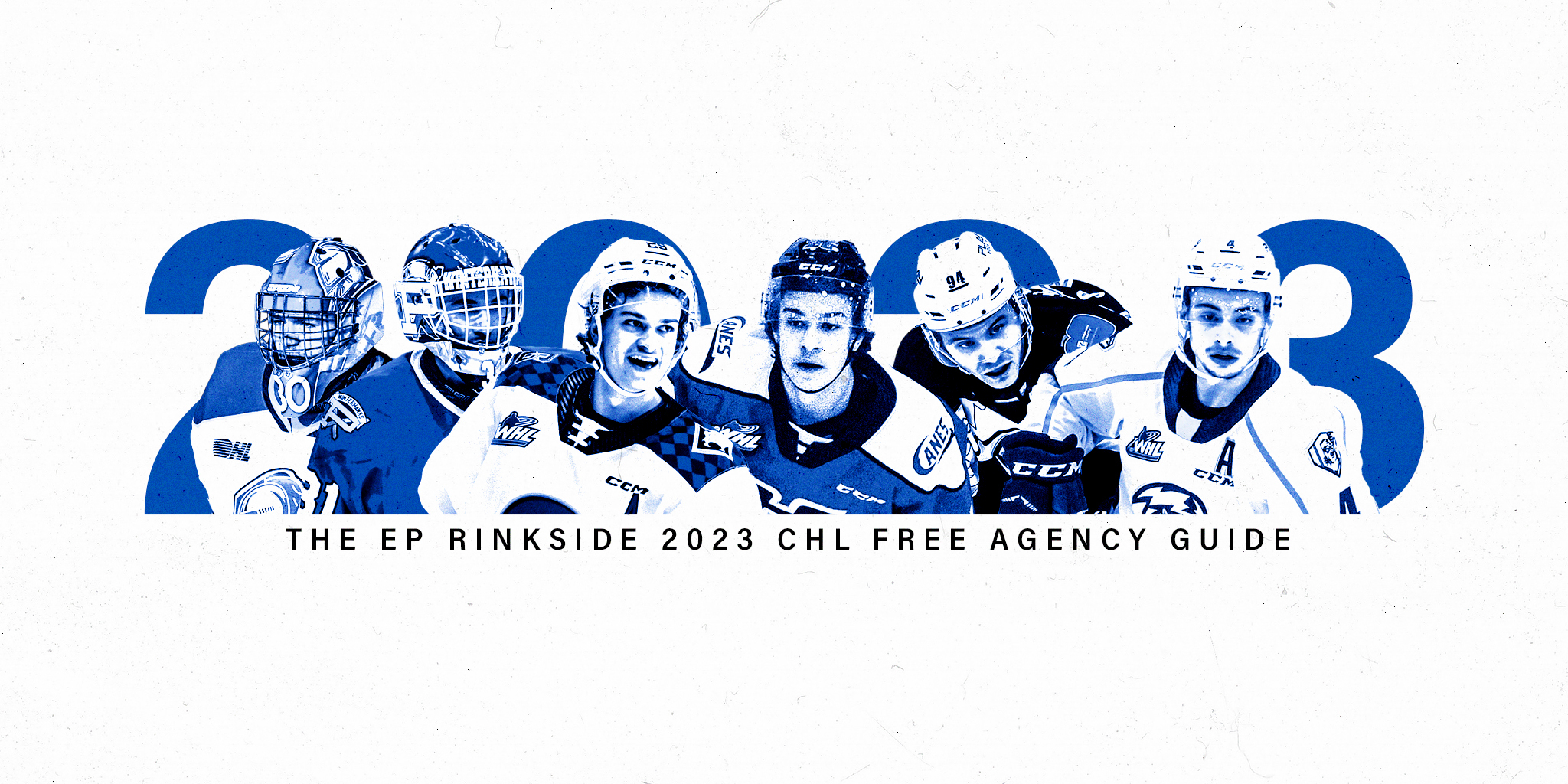The EP Rinkside 2023 CHL Free Agency Guide


The NHL is, more than anything, an exercise in efficiency. It's also about luck. At the intersection of both, you'll find CHL free agency.
It's a mechanism in the collective bargaining agreement that allows players who failed to find a home at the NHL Entry Draft or couldn't come to terms with the team that drafted them to sign an entry-level contract with the team of their choosing. The specifics of what determines a player's availability or not can get a bit hazy at times, but those two qualifiers work as a general rule.
Now, the odds with these players aren't great. They're the ultimate long shots. There's a reason that NHL teams passed on them two, sometimes three times before faxing their agent a contract offer, after all.
Still, they represent low-risk bets with virtually no downside. You don't have to invest a draft pick to add these players to your system. These players are still restricted to entry-level contracts, and that means that they're capped at less than $1 million annually on their first contract, too.
Most of the time, you get organizational depth out of these bets, if that. Sometimes, though, you're the Tampa Bay Lightning and a third of your middle-six on a Stanley Cup-winning team are former CHL free agents Tyler Johnson and Yanni Gourde. Then there's players like Jonathan Marchessault, Logan Thompson, Brandon Hagel, Arber Xhekaj, Barclay Goodrow, Tanner Jeannot, and Barclay Goodrow who all started their NHL careers in like fashion.
What follows is an accounting of the players we think are most likely to sign an entry-level contract with an NHL team, with scouting reports from Mitch Brown (WHL), Daniel Gee (WHL), David St-Louis (QMJHL), Lauren Kelly (OHL), and Greg Balloch (Goaltending).
There isn't really an inflection point for CHL free agency, so don't expect these players to start signing by the handful in the coming weeks. If anything, you'll see maybe five of these players land NHL entry-level contracts sporadically over the balance of the season, another three or so settle for AHL contracts, and then the rest take cross-Atlantic flights or go the Canadian university route to continue their playing careers.
